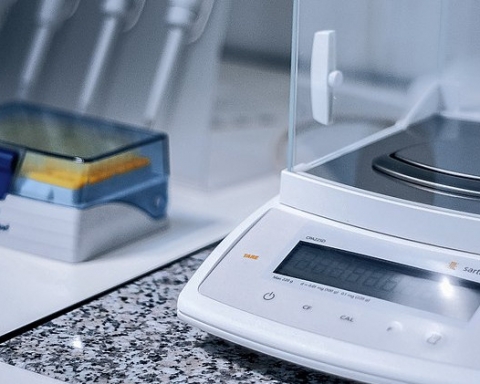Validation is required for ensuring that any procedure, process, systems are working properly. Analytical method validation is the prerequisite for desired quality of products .The development of analytical method validation bears a great importance both in pharmaceuticals and other industries. The goal of this paper is to provide a close review of analytical method validation with different validation characteristics.
Introduction
Method validation is a part and parcel of an industry. It refers to documented observation which ensures that a specific method, and the instruments involved in the method, will provide appropriate results that accurately fulfill the desired properties of the product.
Analytical method validation is the way of proving that an analytical method is suitable for its main purpose. The steps and aim of the analytical procedures should be clearly defined before starting validation .Validation data must be produced according to a protocol approved by the current good manufacturing practices .The procedure of each validation method should be well narrated. Procedure for both drug substance and product analytes should be revised & updated.
The analytical procedures should be validated by comparing procedures published in the relevant pharmacopoeia or other established standard references. The acceptance of all test methods used should always be verified under the real conditions of use and should be nicely documented. Methods should be validated to include consideration of properties included in the International Conference on Harmonization (ICH) guidlines1,2. ICH deals with harmonization of technical necessities for the registration of products among the markets of the Europe, USA, and Japan. The recent U.S. Food and Drug Administration (US FDA) methods validation guidance document, 3-5 as well as the United States Pharmacopoeia (USP),6 both refer to ICH guidelines.
Importance of analytical method validation
Validated and well-characterized analytical methods are the prerequisite to gain expected results in the industries while analyzing samples. Each analytical technique has its own characteristics, which will differ from analyte to analyte. So, specific validation criteria are required for each analyte. Moreover, ultimate goal of the study also influences the appropriateness of the technique. If sample analysis is conducted on products for people consumption, it is required to validate the analytical method(s) as per ICH guidelines .Thus proper validation information is essential for different parameter to prove that the method is reliable7.
Common validation properties are:
- Range
- Quantitation limit
- Detection limit
- Specificity
- Linearity
- Accuracy
- Precision (repeatability, intermediate precision, and reproducibility)
| Validation Characteristics | Assay | Testing for impurities
|
Identification | |
| Standard | Limit | |||
| Accuracy | Yes | Yes | No | No |
| Precision-Repeatability | Yes | Yes | No | No |
| Precision-intermediate precision | Yes | Yes | No | No |
| Specificity | Yes | Yes | Yes | Yes |
| Detection unit | No | No | Yes | No |
| Quantitation limit | No | Yes | No | No |
| Linearity | Yes | Yes | No | No |
| Range | Yes | Yes | No | No |
| Roburtness
|
Yes | Yes | No | No |
Figure: ICH, USP, and FDA Methods Validation Characteristics Requirements for Various Types of Tests6
Analytical Performance Characteristics Procedure
The analytical system itself should be adequately designed, maintained, calibrated, and validated before starting the task of methods validation. All persons performing the validation test must be properly trained. Method validation protocol must be approved. Specific values are taken from the ICH, U.S. FDA, USP, HC etc. as references.
Steps in method validation
- Developing a validation protocol.
- Defining the application, purpose and scope of method.
- Defining the performance parameters and acceptance criteria.
- Defining validation experiments.
- Verifying relevant performance characteristics of equipments.
- Quality materials, e.g. Standards and reagents.
- Performing pre-validation experiments.
- Adjusting method parameters and acceptance criteria if necessary.
- Performing full internal and external validation experiments.
- Developing SOPs for executing the method in the routine.
- Defining criteria for revalidation.
- Defining type and frequency of system suitability tests and/or analytical quality control checks for the routine.
- Documentation of validation experiments and results in the validation.
Specificity
Test method
By injecting of the extracted placebo the specificity of the assay process is determined to show that interference with the elution of analyte is absent.
Documentation
For documentation the chromatogram is printed and the lowest quantified concentration is recorded. Then data is provided which shows the accuracy and precision needed.
Acceptance properties
The concentration that gives a signal- to-noise ratio of 10:1, is the limit of quantitation for chromatographic methods.2 The quantitation limit is the best estimate of a low concentration that gives an RSD of approximately 10% for a minimum of six replicate determinations.8
System Suitability
Test method
For finding the accuracy and precision of the system, System suitability tests is performed on both HPLC systems by injecting six injections of a solution that contains analyte at 100% of test concentration. The parameters which will be measured are plate count, tailing factors, resolution, and reproducibility.
Documentation
The chromatogram is printed and the data is recorded on the datasheet
Acceptance properties
Retention factor (k): The void volume should be ≥2.0.The peak of interest should be well resolved from other peaks.
Resolution (Rs): Resolution should be ≥2 between the peak of interest and the closest eluted peak, Reproducibility: RSD for peak area, height, and retention time will be 1% for six injections.
Tailing factor (T): T should be 2. Theoretical plates (N): ≥2000.
Accuracy
Test method
At three concentrations over the range of 50 to 150% of the target concentration spiked samples are considered. At each concentration three individually prepared replicates will be analyzed.
Documentation
The theoretical value, assay value, and percent recovery is reported for each sample. The mean, standard deviation, RSD, and percent recovery are calculated for all samples. Then results are recorded on the datasheet.
Acceptance criteria
For non-regulated products the mean recovery should be within 90 to 110% of the theoretical value. For the U.S. pharmaceutical industry, 100 ± 2% is typical for an assay of an active ingredient in a drug product over the range of 80 to 120% of the target concentration.9 Lower percent recoveries may be acceptable based on the needs of the methods. HC states that the required accuracy is a bias of ≤2% for dosage forms and ≤1% for drug substance.8
Precision
Test procedure
One sample solution containing the target level of analyte will be made. From this sample solution ten replicates will be prepared according to the final method procedure.
Documentation
Record the retention time, peak area, and peak height on the datasheet. Calculate the mean, standard deviation, and RSD.
Acceptance criteria
The FDA states that the typical RSD should be 1% for drug substances and drug products, ± 2% for bulk drugs and finished products. HC states that the RSD should be 1% for drug substances and 2% for drug products. For minor components, it should be ± 5% but may reach 10% at the limit of quantization.
Robustness
The ability of an analytical method to remain unaffected by small but deliberate variations in method parameters is called robustness.
The chromatography for a sample containing representative impurities is compared to the chromatography gained by using the target parameters. If the variations are within the limits which give correct chromatography, they are incorporated in the method procedure.9, 10
Conclusion
Analytical method validation plays a vital role in pharmaceutical industry. It is a must have part for releasing the products in the market. All analytical methods should be properly validated and documented for satisfying regulatory authority requirements. The aim of this article is to pave the way for developing the quality of the analytical method validation process.
List of abbreviation used in article
EC: European Community
FDA: Food and Drug Administration
HC: Health Canada
HPLC: High Performance Liquid Chromatography
ICH: International Conference on Harmonization
RSD: Relative Standard Deviation
U.S.: United States
USP: United States Pharmacopoeia
References:
- International Conference on Harmonization (ICH), Q2A: Text on Validation of Analytical Procedures, March 1995.
- International Conference on Harmonization (ICH), Q2B: Validation of Analytical Procedures: Methodology, May 1997.
- U.S. Center for Drug Evaluation and Research, Reviewer Guidance: Validation of Chromatographic Methods, November 1994.
- U.S. FDA, Guidance for Submitting Samples and Analytical Data for Methods Validation, Rockville, Md., USA, Center for Drugs and Biologics, Department of Health and Human
Services, February 1987.
- U.S. FDA DHHS, 21 CFR Parts 210 and 211, Current Good Manufacturing Practice of Certain Requirements for Finished Pharmaceuticals, Proposed Rule, May 1996.
- Validation of Compendial Methods, <1225>, U.S. Pharmacopoeia 26-National Formulary 21, United States Pharmacopeial Convention, Rockville MD, 2003.
- Wood R. How to Validate Analytical Methods. Trends in Analytical Chemistry. 2005;54:149-58.
- Drugs Directorate Guidelines, Acceptable Methods, National Health and Welfare, Health Protection Branch, Canada, July 1994. (This guidance is available from HC as a print copy, but is soon to be released on the website http://www.hc-sc.gc.ca/hpfb-dgpsa/tpd-dpt/).
- Green M J. Analytical Chemistry. 1996; 68: 305.
- Shabir G A, Journal of Chromatography A, 2003; 987:57.








